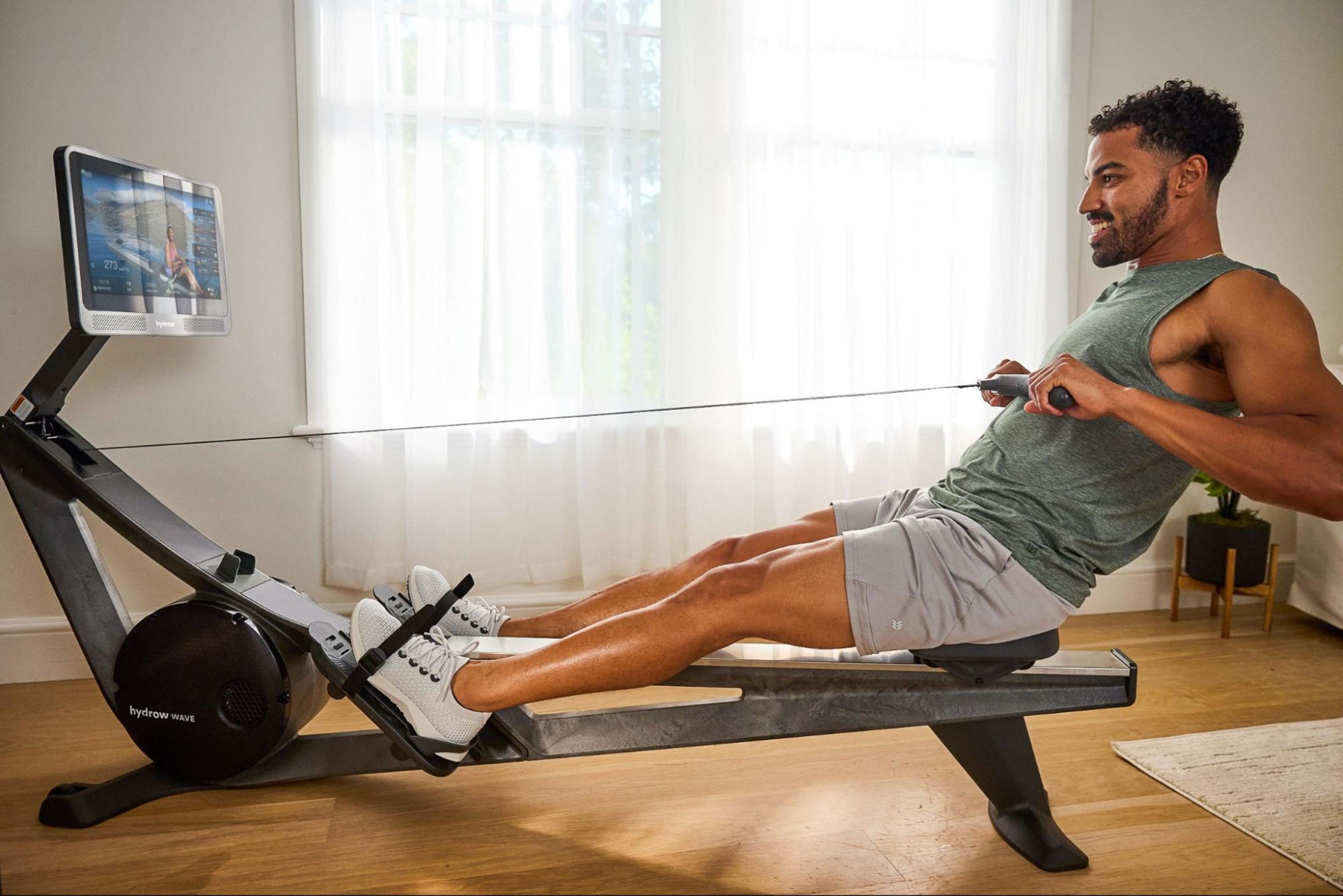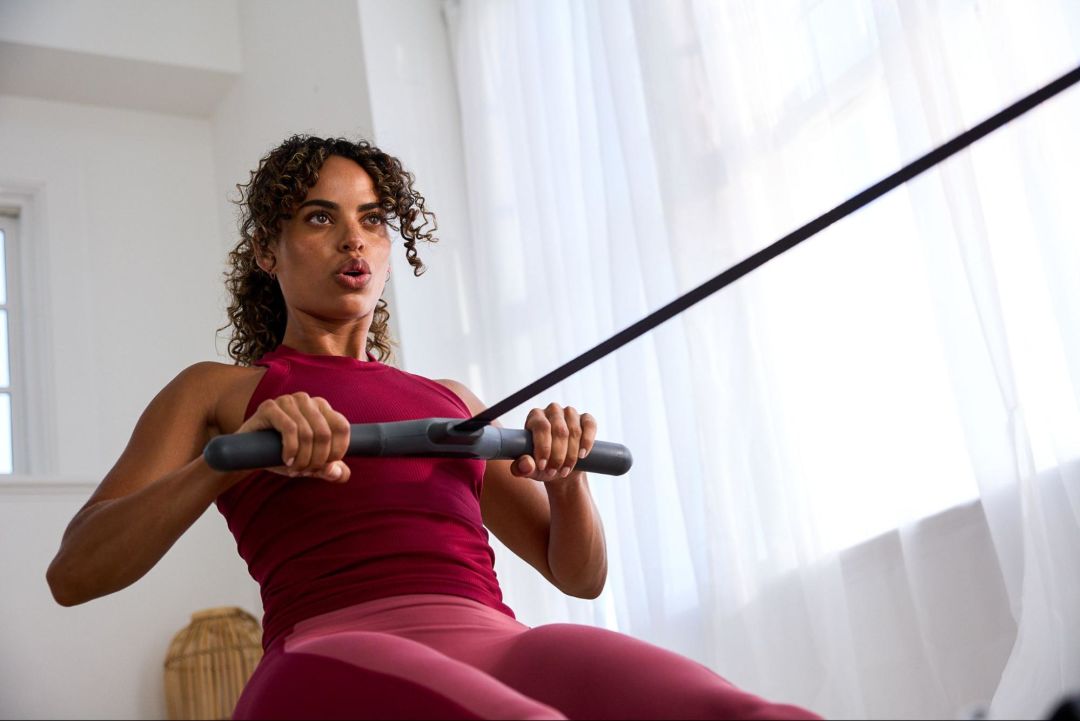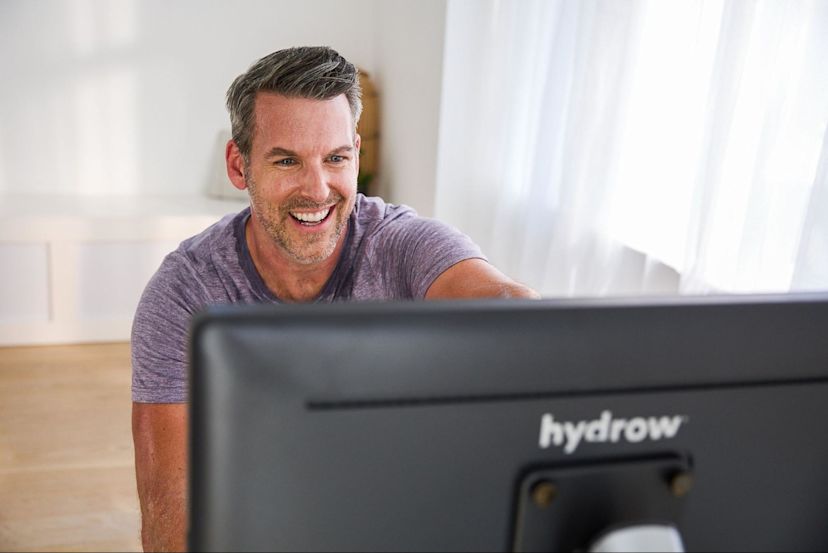Is Rowing Good for Your Glutes?

If you’re looking to try out rowing machine workouts but are wondering whether rowing builds your glutes specifically, you’re not alone. The answer is yes, rowing can be good for the glutes (buttocks) — to some extent.
Read on to learn more about:
Does rowing work glutes?
Rowing is primarily an aerobic exercise that targets several muscle groups, including the your back, arm, and leg muscles. The glutes are involved in the rowing motion, particularly during the drive phase.
When rowing, the glutes are engaged as you push off with your legs and extend your hips to generate power. This action is similar to a leg press or squat movement, which activates your glute muscles.
However, the level of glute muscle activation during rowing can vary depending on your rowing technique and how much emphasis you place on driving through your legs and engaging your glutes, as well as your resistance settings.
So, does a rowing machine work glutes? Building strong glutes through rowing is definitely possible, but it may not be necessarily the most efficient way of achieving significant glute development, if that is your goal.
3 ways to build stronger glutes while rowing
To build strong glutes through rowing, it's essential to understand how the exercise engages these muscles and how it fits into an overall fitness plan.
During rowing, the glutes come into play when you push off with your legs and extend your hips to generate power. This part of the rowing stroke is similar to a squat or deadlift motion, as mentioned earlier. The more emphasis you place on driving through your legs and engaging your glutes, the more you'll work these muscles.
Here are three ways to maximize your glute activation as you row, including:
Efficient technique
Resistance settings
Frequency and consistency
Let’s dig in:
1. Efficient technique
Proper technique is crucial if you want to work your glutes specifically as you row. Ensure you are pushing through your legs and extending your hips rather than solely relying on your arms and back. This will distribute the workload to your glutes and make the exercise more effective for targeting these muscles.
2. Resistance settings
Rowing machines typically allow you to adjust the resistance level, which will make rowing more challenging and require more effort from your glutes to generate power. However, it is important to find the right balance between challenging your glutes and not compromising your overall rowing form, as this can actually make your workouts less effective and could potentially lead to injury.
3. Frequency and consistency
Like any exercise, building strong glutes through rowing requires consistency. Rowing regularly and progressively by increasing your intensity over time can help you develop your glutes.

Efficient and Effective
Work 86% of your muscles in just 20 minutes with a Hydrow rowing machine.
The importance of cross-training for stronger glutes
While rowing can contribute to overall lower-body strength and endurance, it may not be the best primary exercise for building strong glutes. Here’s why:
1. Limited isolation
Rowing is a compound exercise that engages multiple muscle groups simultaneously. While the glutes are involved, they are not the sole focus. To target and isolate the glutes more effectively, exercises like squats, lunges, deadlifts, and glute bridges may be more suitable.
2. Volume and resistance
To build muscle and strength effectively, it often requires a higher volume of specific exercises and progressive resistance. Rowing alone may not provide the necessary volume or resistance to achieve significant glute hypertrophy.
3. Individual variation
People's bodies respond differently to exercises. Some individuals may experience more significant glute development from rowing than others. However, if your primary goal is to build strong glutes, there are more targeted options available.
Mix up your workout routine with a Hydrow membership
In summary, while rowing can definitely contribute to the development of stronger glutes, it may not be the most efficient or effective exercise for this specific purpose. To build strong glutes, you might want to incorporate a combination of exercises that specifically target these muscles along with rowing as part of a well-rounded fitness routine.
If you are looking to invest in a rowing machine for your home, be sure to check out Hydrow. Our state-of-the-art rowing machines are the perfect addition to any home gym, giving you an immersive and total-body workout in just 20 minutes a day.
Hydrow’s extensive library of workout content is led by our team of world-class and Olympic Athletes and filmed in stunning locations around the world. Whether you’re looking to do a rowing workout or cross-train with yoga, Pilates, and circuit training, you’ll be transported to stunning global destinations that keep you motivated to come back again and again.

Explore Hydrow
Learn more about how you can transform your fitness routine with a rowing machine.







